#Hypotrachyna
Text
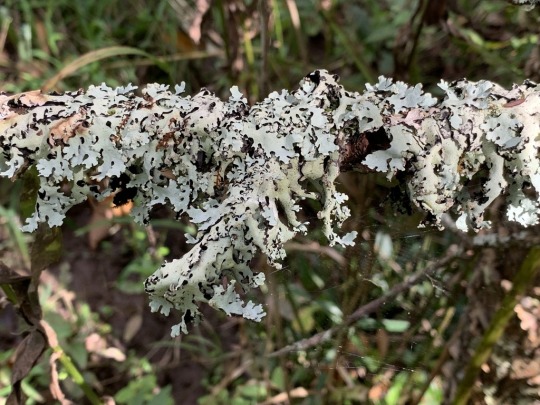
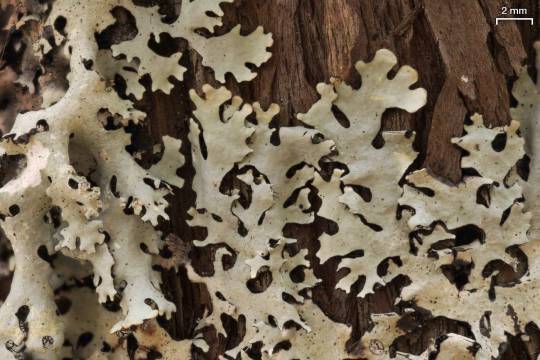


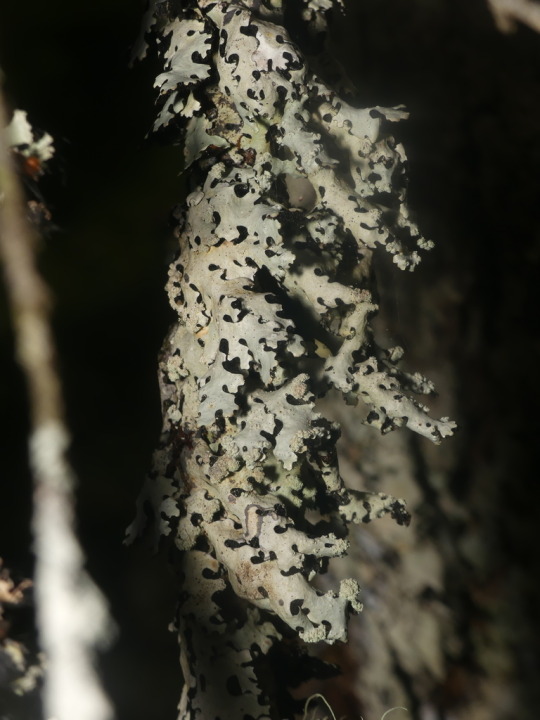
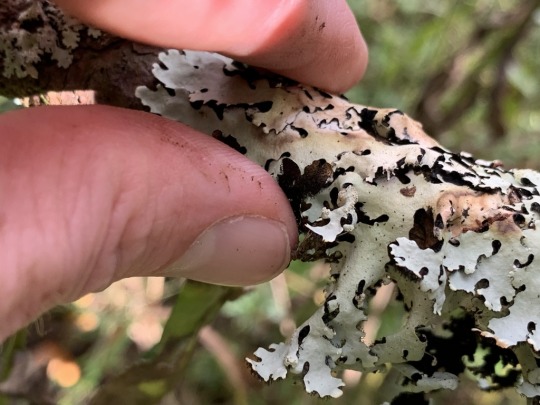
Hypotrachyna rockii
This foliose lichen has irregular, sublinear lobes with lobulate margins and plane to convex apices. The upper surface is whitish gray and often wrinkled and cracked. It has laminal, crater-like soralia full of farinose or granular soredia. The lower surface is black with brown edges, and has scattered black rhizines. It rarely produces apothecia, which have a crenulate or sorediate margin and a brown disc. H. rockii grows on pine bark in montane forests in the neotropics and east Africa.
images: source | source
info: source
#lichen#lichens#lichenology#lichenologist#mycology#ecology#biology#symbiosis#symbiotic organisms#algae#life science#environmental science#natural science#nature#naturalist#beautiful nature#weird nature#Hypotrachyna rockii#Hypotrachyna#I'm lichen it#lichen a day#daily lichen post#lichen subscribe#go outside#take a hike#look for lichens
112 notes
·
View notes
Photo
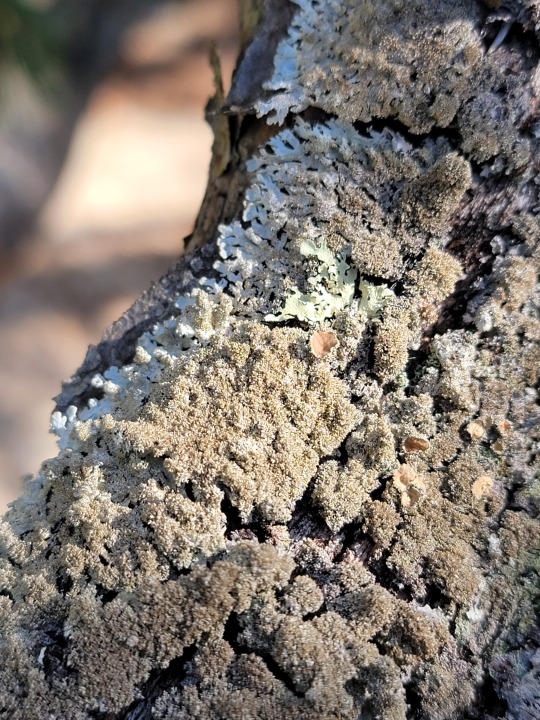


Hypotrachyna minarum
Isidiate square britches. seems to require a certain level of humidity during summer to manage to be prolific, I see this commonly in the Appalachians where we find it’s core. ILP Allegheny Plat I find it less but it really becomes rare in flat glacial woods.
9 notes
·
View notes
Photo


Ph: Fabián Joany Guzman García.
Especie: Hypotrachyna sp.
Localidad: Sendero Quebrada La Vieja, Chapinero-Bogotá D.C. Colombia
Taxonomía:
Reino: Fungi/Filo: Ascomicota /Clase:Lecanoromycetes /Orden: Lecanorales/Familia: Parmeliaceae/Genero: Hypotrachyna.
Morfología:
Este género de liquen presenta un talo liquénico folioso y una superficie superior de color blanco grisáceo, plana, creciendo a lo largo del sustrato, adherido en gran parte al mismo ( se extiende bastante a través de parches), lóbulos delgados y con punta ovalada, elongados, lacinias o ramificaciones aplanadas con partes rojizas, truncados. Superficie inferior levemente de color negro, con rizinas ramificadas. Isidios y soredios frecuentemente presentes, semejantes a dedos. Sin presencia de cilios.
Distribución y Ambientes: Este género se encuentra en distintos sustratos, comúnmente creciendo sobre rocas de manera superficial, también es común sobre suelo, ramas de arbustos, o musgos. Se distribuye en una altitud que va desde 1000 hasta los 4000 m. En Colombia se encuentra en el departamento de Cundinamarca en los municipios de la Calera (paramo de palacio), Mosquera, Guasca, Zipaquira (paramo el guerrero) en Bogotá D.C. es encontrada en la región Monserrate, paramo Sumpaz, en la sabana de Bogotá.
Usos: Gracias a su tolerancia a condiciones ambientales cambiantes y bio-acumulación son usados como bioindicadores (reacciona a la contaminación o cambios presentes en la atmosfera) de calidad del aire.
Estado de conservación: Este género no está registrado en peligro de extinción según la IUCN Red List.
Fuentes:
http://www.bdigital.unal.edu.co/4917/1/angelicajohannarinconespitia.2011.pdf
http://www.biovirtual.unal.edu.co/en/collections/result/genus/Hypotrachyna/
http://www.catalogueoflife.org/col/browse/tree/id/d1bda92e9f09fdd8c7d266ed1c2a440b
file:///C:/Users/Eduard%20y%20Alejo/Downloads/CB-0473121%20(1).pdf
0 notes
Text


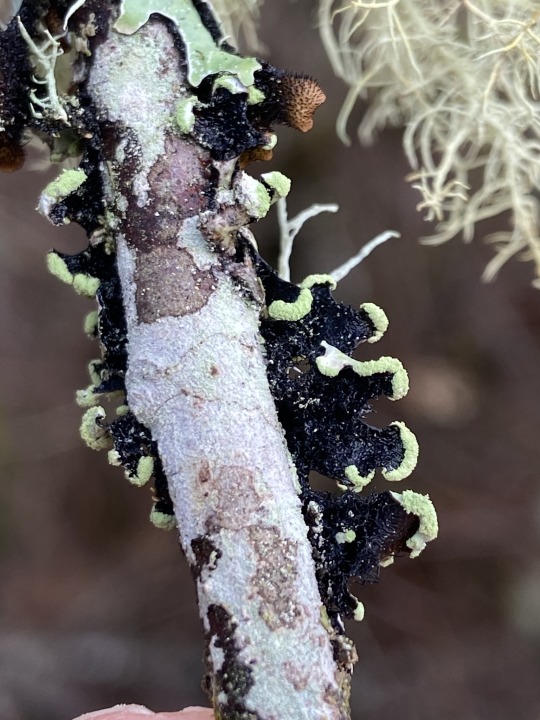

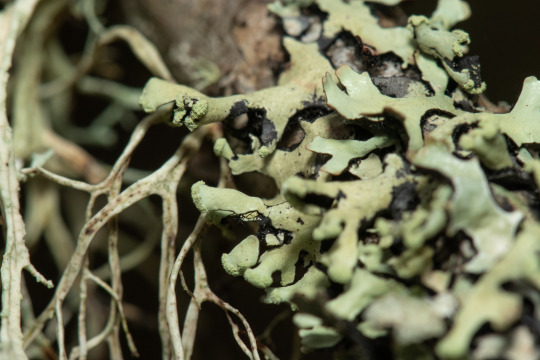
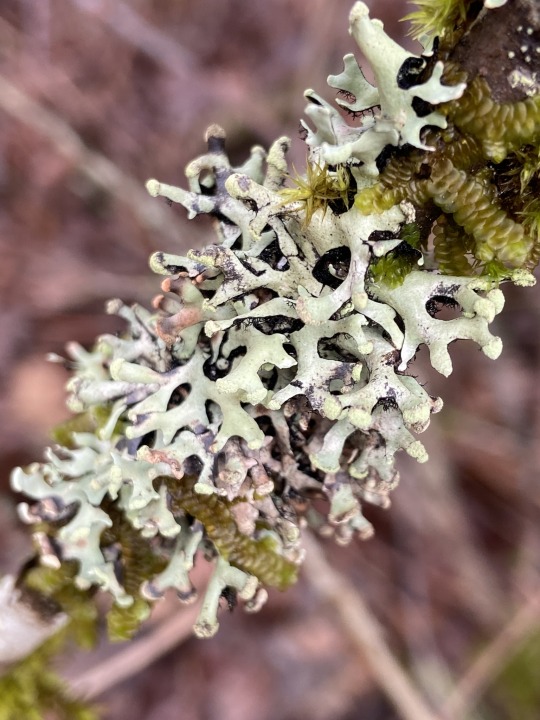

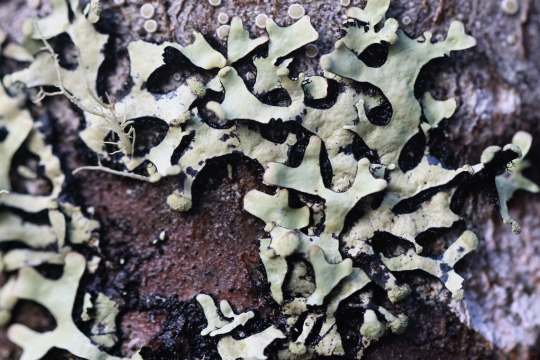
Hypotrachyna sinuosa
images: source
#lichen#lichens#lichenology#lichenologist#mycology#ecology#biology#phycology#symbiosis#symbiotic organisms#algae#Hypotrachyna sinuosa#Hypotrachyna#life science#environmental science#natural science#nature#naturalist#beautiful nature#weird nature#trypo#trypophobia#I'm lichen it#lichen a day#daily lichen post#lichen subscribe
87 notes
·
View notes
Text



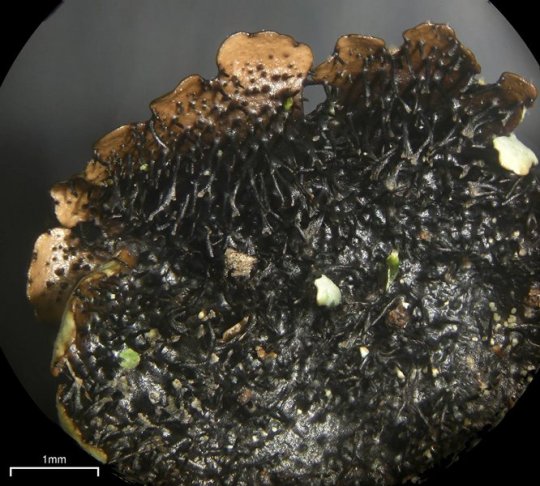
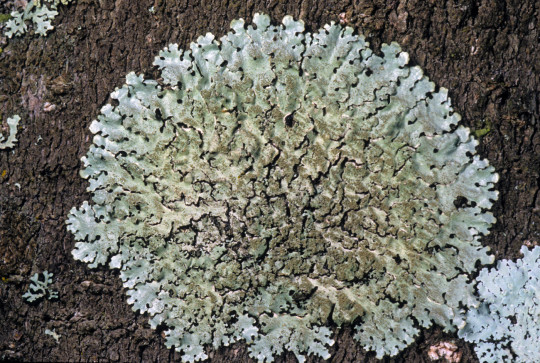




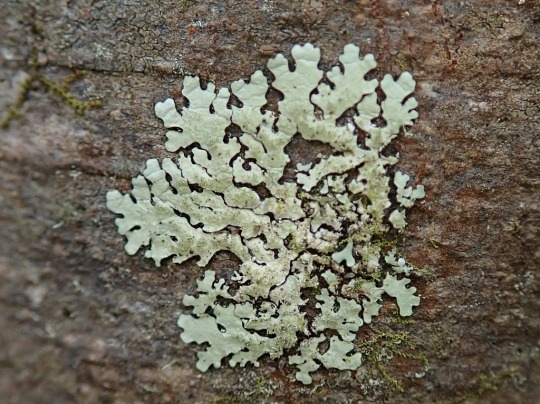
Hypotrachyna minarum
Hairless-spined loop
images: source | source | source
#lichen#lichens#lichenology#lichenologist#mycology#ecology#biology#symbiosis#symbiotic organisms#algae#foliose lichen#Hypotrachyna minarum#Hypotrachyna#fungus#fungi#nature#naturalist#beautiful nature#weird nature#natural science#environmental science#life science#I love lichens#lichens are so good
42 notes
·
View notes
Text



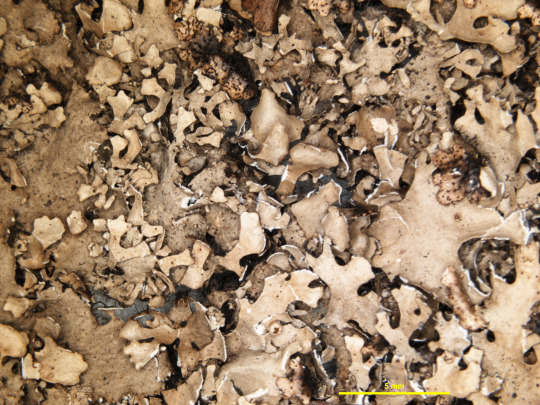
Hypotrachyna physcioides
This foliose lichen grows on rock, soil, and bark in neotropical and SE Asian forests. It has elongated, sublinear, leathery lobes, that grow in patches up to 15 cm in diameter. The upper surface is gray with white patches, and the lower surface is black with black, branched rhizines. It produces brown-disked apothecia with crenulate margins. I am trying hard to feature more lichens from the tropics and the southern hemisphere, but pictures of and info on these little guys are harder to come by than lichens from cooler climates and the northern hemisphere. Totally unfair! So please don't let these less-than-stellar pictures deter you from giving all your love to H. physcioides.
images: source | source
info: source
#lichen#lichens#lichenology#lichenologist#mycology#ecology#biology#bryology#phycology#symbiosis#symbiotic organisms#fungi#fungus#green algae#Hypotrachyna physcioides#Hypotrachyna#trypo#tw: trypophobia#nature#the natural world#natural science#environmental science#life science#i'm lichen it#lichen a day#daily lichen post#lichen subscribe
31 notes
·
View notes
Text
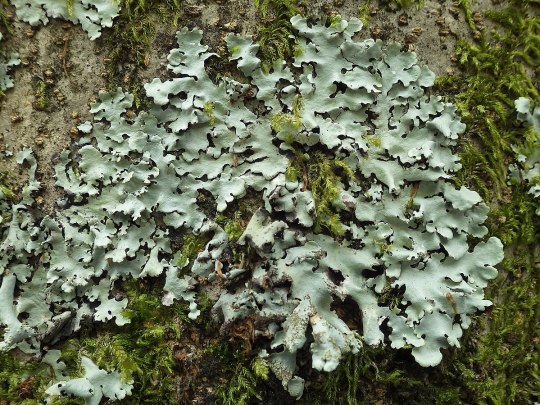


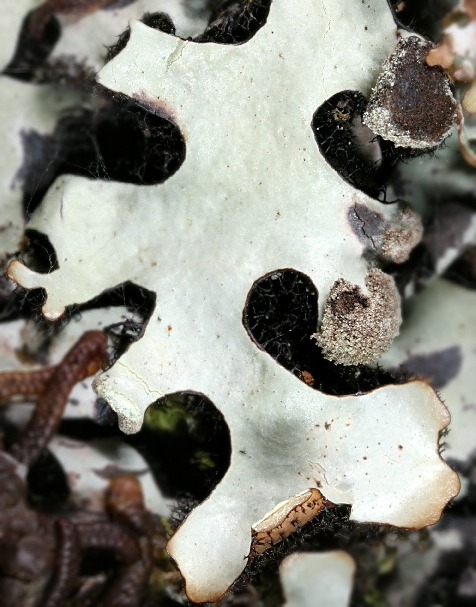

Hypotrachyna endochlora
This foliose lichen has large, thick, branched lobes, many of which are tipped with granular soredia. The upper surface of the lobes is gray-green in color, and the lower surface is black and rhizinate. It only rarely produces apothecia, which are short-stalked with a concave discs and crenulate margins. H. endochlora grows on nutrient poor rocks and bark in temperate-warm costal habitats.
images: source | source | source
info: source | source | source | source
#lichen#lichens#lichenology#lichenologist#lichenized fungus#fungus#fungi#mycology#ecology#biology#botany#systematics#taxonomy#Hypotrachyna endochlora#Hypotrachyna#life science#environmental science#natural science#nature#naturalist#science#scientist#I'm lichen it#lichen a day#daily lichen post#science side of tumblr
67 notes
·
View notes
Photo


Hypotrachyna minarum
3 notes
·
View notes
Text
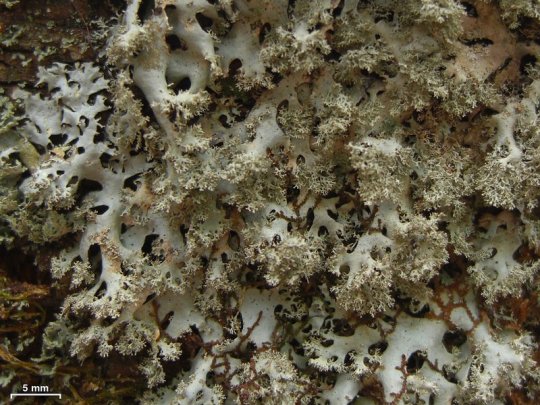



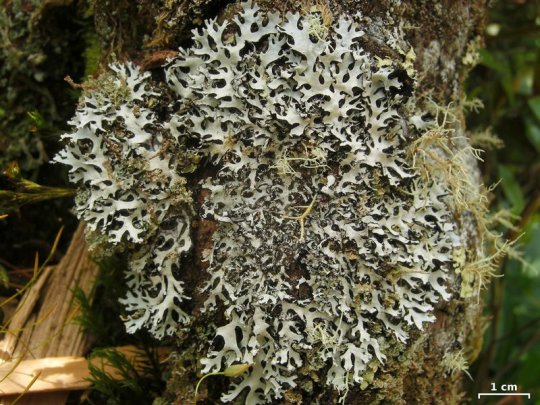


Hypotrachyna prolongata
This foliose lichen has sublinear to subirregular lobes with marginal cylindrical isidia, and lobulate (leaf-like) isidia erupting out of swollen, lateral lobe ends, giving the lobe edges an overall complex and ragged appearance. The upper surface is pale gray, and the lower surface is black and rhizinate. It very rarely produces apothecia, which have brown, concave disks and smooth margins. H. prolongata grows on trees and shrubs in dwarf forests, ranging from central South America up to the southeastern U.S.
images: source | source | source
info: source
#lichen#lichens#lichenology#lichenologist#lichenized fungus#fungus#fungi#mycology#ecology#biology#botany#bryology#systematics#taxonomy#life science#environmental science#algae#symbiosis#symbiotic organisms#nature#natural science#naturalist#beautiful nature#weird nature#Hypotrachyna prolongata#Hypotrachyna#i'm lichen it#lichen a day#daily lichen post#lichen subscribe
51 notes
·
View notes
Text




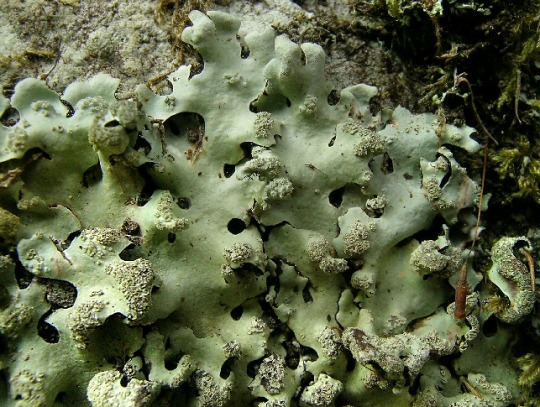



Hypotrachyna revoluta
If you are seeing this post, I am currently on my way to Egypt for a much needed vacation, and this is a queued post that I totally didn't prepare the night before I left psh who would do that? wait until the last minute to make 10 posts or 10 days that doesn't sound responsible at all totally not something I would do! Especially not when presenting fantastic lichens like H. revolute who deserve so much attention! This foliose lichen has short, irregular, incised lobes that grow in loose to closely appressed patches up to 10 cm in diameter. The upper surface is smooth and shiny, and gray to gray-green in color, whereas the lower surface is brown-black with dark, slender rhizines. The edges of the lobes are often yellow-brown in coloration, with the lobes closer toward the center of the thallus producing granular yellow-green soredia out of bulbous or pustule-like soralia. H. revoluta grows on nitrogen-rich trees and rock in tropical and temperate regions.
images: source | source
info: source | source
#lichen#lichens#lichenology#lichenologist#lichenized fungus#fungi#fungus#mycology#ecology#biology#botany#systematics#taxonomy#bryology#life science#environmental science#natural science#science side of tumblr#nature#naturalist#beautiful nature#weird nature#symbiosis#algae#Hypotrachyna revoluta#Hypotrachyna#I'm lichen it#lichen a day#daily lichen post#lichen subscribe
59 notes
·
View notes
Text

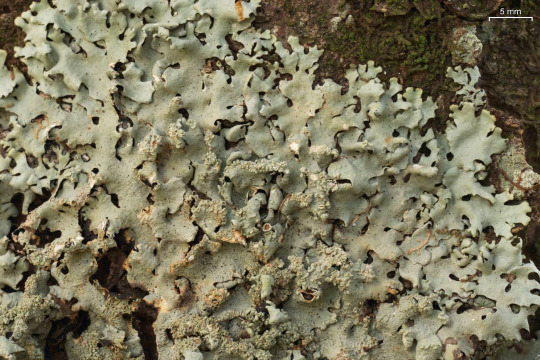
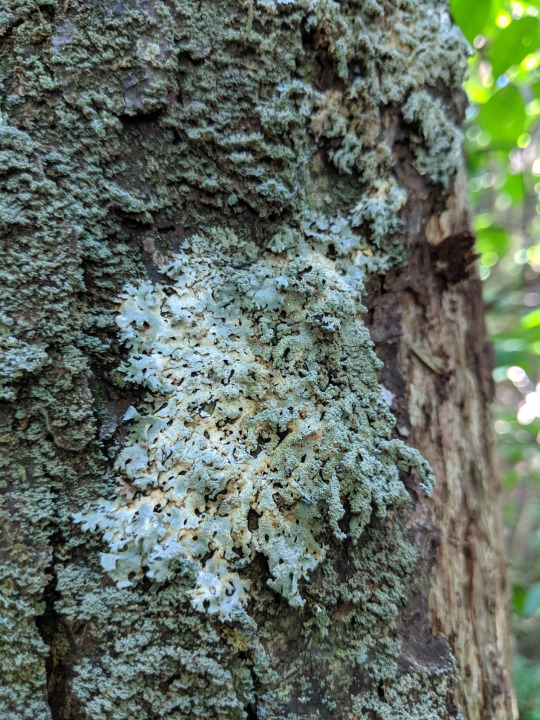

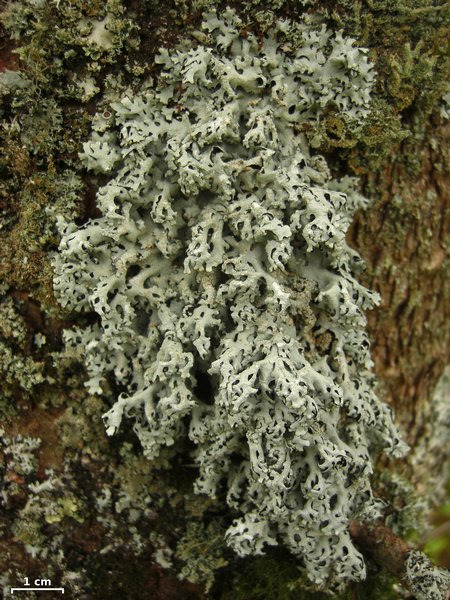
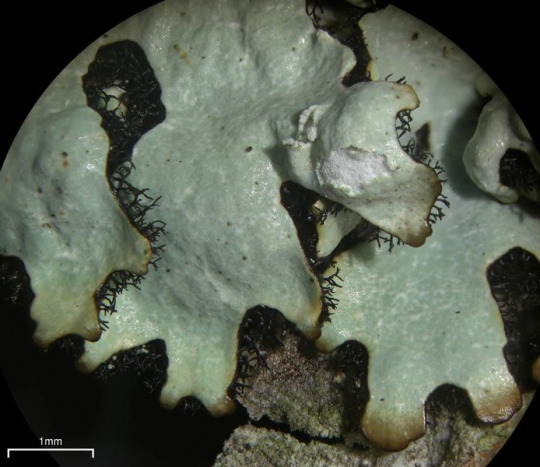

Hypotrachyna croceopustulata
I just wish that the people who name lichens didn't compare their structures to *shudders* pustules, but here we are. My apologies to H. croceopustulata. I am sorry they did you dirty like that, sweety. This foliose lichen has sublinear, subdichotomously branching lobes. The upper surface is whitish-grayish-bluish-green in coloration, with white, crater-like openings producing granular soredia. The lower surface is brown-black, with branched, black rhizines. It seldomly produces apothecia, which have a brown disc and a smooth margin. H. croceopustulata grows on the bark of pine and hardwood trees in mixed forests. It has been recorded in the neotropics of North and South America, and also in East Africa.
images: source | source | source
info: source
#lichen#lichens#lichenology#lichenologist#lichenized fungus#fungus#fungi#mycology#ecology#biology#botany#bryology#systematics#taxonomy#life science#environmental science#natural science#nature#naturalist#beautiful nature#weird nature#I'm lichen it#lichen a day#daily lichen post#Hypotrachyna croceopustulata#Hypotrachyna#lichen subscribe
113 notes
·
View notes
Photo


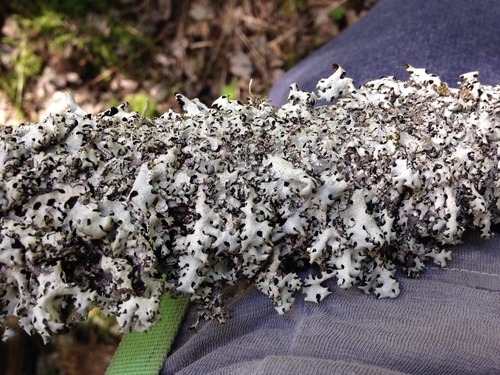

Hypotrachyna virginica
This foliose lichen kinda looks like inflated puzzle pieces, with it’s thick, leathery lobes with dichotomous branches. The upper surface is a green-tinged, pale gray, and the margins and lower surface are black. Soredia are produced from cracked pustules on the upper surface, usually more towards the center of the thallus. You can distinguish H. virginica from look-alike H. laevigata by the larger, more coarse soredia produced by the formers, and the fairer, smaller soredia produced by the latter. H virginica grows on tree bark in spruce-fir forests in the southern Appalachian mountains--a critically imperiled ecosystem being decimated by invasive Balsam woolly adelgids (Adelges piceae). It used to be thought that this species was found disjointedly in the neotropics, as well as the SE U.S., but recent studies showed that specimens found in the neotropics were actually a separate species. This means that the few populations left of this lichen are in danger--projections predict a loss of over 80% of the area of occupancy and extent of occurrence. And yeah, that’s bad. And while this lichen is lucky enough to be well studied and monitored in its decline, that doesn’t necessarily mean there is much scientists can do about it. They will try, though! We always try. But change is needed from without, to protect the most vulnerable species within.
images: source | source | source
info: source | source
#Lichen#lichens#lichenology#lichenologist#lichenized fungus#fungus#fungi#mycology#ecology#biology#botany#bryology#conservation#conservation ecology#biodiversity#ecosystems#forests#forest#environmental science#forestry#life science#natural science#the natural world#naturalist#nature#beautiful nature#weird nature#Hypotrachyna#Hypotrachyna virginica#I'm lichen it
168 notes
·
View notes
Photo



Hypotrachyna taylorensis
This foliose lichen has a large, smooth thallus and rounded or squarish lobe tips. The lobes can often appear wavy or crumpled, like wet paper towels. The upper surface is bluish-green or gray, and the lower surface is dark brown to black and covered in black rhizines. H. taylorensis grows on mossy trees and rocks in Europe and North America.
images: source
info: source | source
#lichen#lichens#lichenology#lichenologist#lichenized fungus#fungus#fungi#mycology#ecology#biodiversity#biology#botany#bryology#systematics#taxonomy#life science#environmental science#natural science#nature#the natural world#naturalist#beautiful nature#weird nature#foliose lichen#leaf lichen#Hypotrachyna#Hypotrachyna taylorensis#lichen a day#daily lichen post#I love lichens
25 notes
·
View notes
Photo
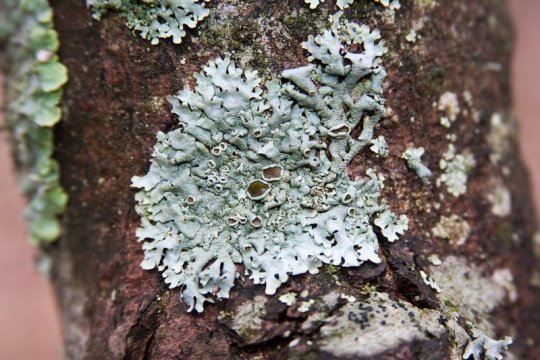





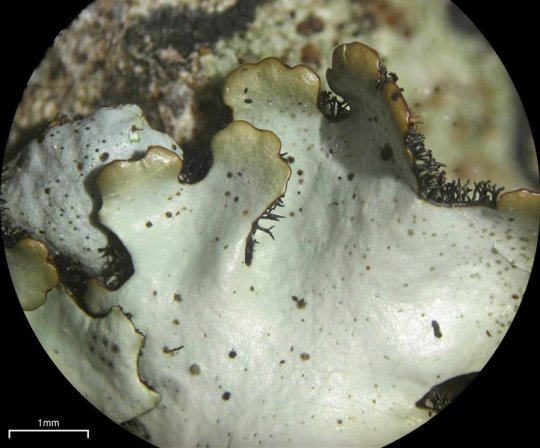
Hypotrachyna livida
Wrinkled Loop Lichen
People love wrinkly dogs and wrinkly cats and wrinkly babies, so how about wrinkly lichens? H. livida is a foliose lichen which forms adnate patches up to 9 cm in diameter made up of subdichtomously branched lobes. The upper surface is a shiny white-gray, and the lower surface is black and covered in forked rhizines. Apothecia are convex, and have a brown disc and crenulate margin. H. livida grows on hardwood bark in montane areas in the neotropics and SE United States. If you want to learn anything and everything about the genus Hypotrachyna, may I recommend A Revision of the Lichen Genus Hypotrachyna (Parmeliaceae) in Tropical America by Mason E. Hale, Jr.--it’s 77 pages of lichen systematic goodness! Seriously though, one of my favorite things in science are individuals who dedicate themselves wholeheartedly to one specific topic. It’s inspiring. Be like Mason E.Hale, Jr. and find the thing you can contribute to the world!
source | source | source
#lichen#lichenology#lichenologist#lichens#lichenthrope#wrinkled loop lichen#biology#ecology#forestry#mycology#fungus#fungi#lichenized fungus#lichenized fungi#botany#bryology#not plants#systematics#science#scientist#citizen science#natural science#naturalist#beautiful nature#nature is beautiful#go outside#take a hike#hug your local lichen#lichen life#I'm lichen it
18 notes
·
View notes
Photo

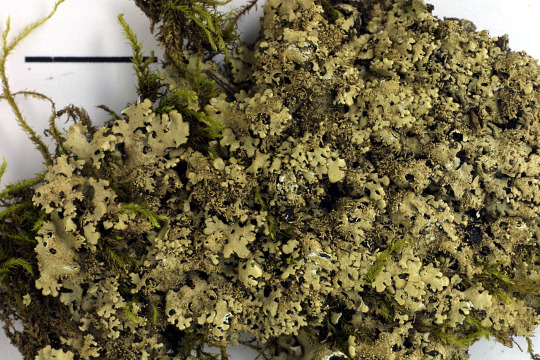

Hypotrachyna horrescens
Hairy-spined shield lichen
This foliose lichen has narrow, subdichotomous lobes with simple, marginal cilia. It forms a round rosette 2-7 cm in diameter. The surface is a smooth, light greenish gray and often dusted with dense isidia. The lower surface is dark brown or black and densely covered in rhizines. It grows on bark, moss, and rocks in forests in montane, mild, and pantemperate zones. I don’t have any fun facts about this lichen, but hey, not every lichen needs to be fun to be loved!
Follow for more daily lichens
source | source | source | source
#lichen#lichens#lichenology#lichenologist#mycology#fungus#fungi#bryology#botany#forestry#nature#natural science#lichen it#biology#biologist#ecology#ecologist
13 notes
·
View notes




